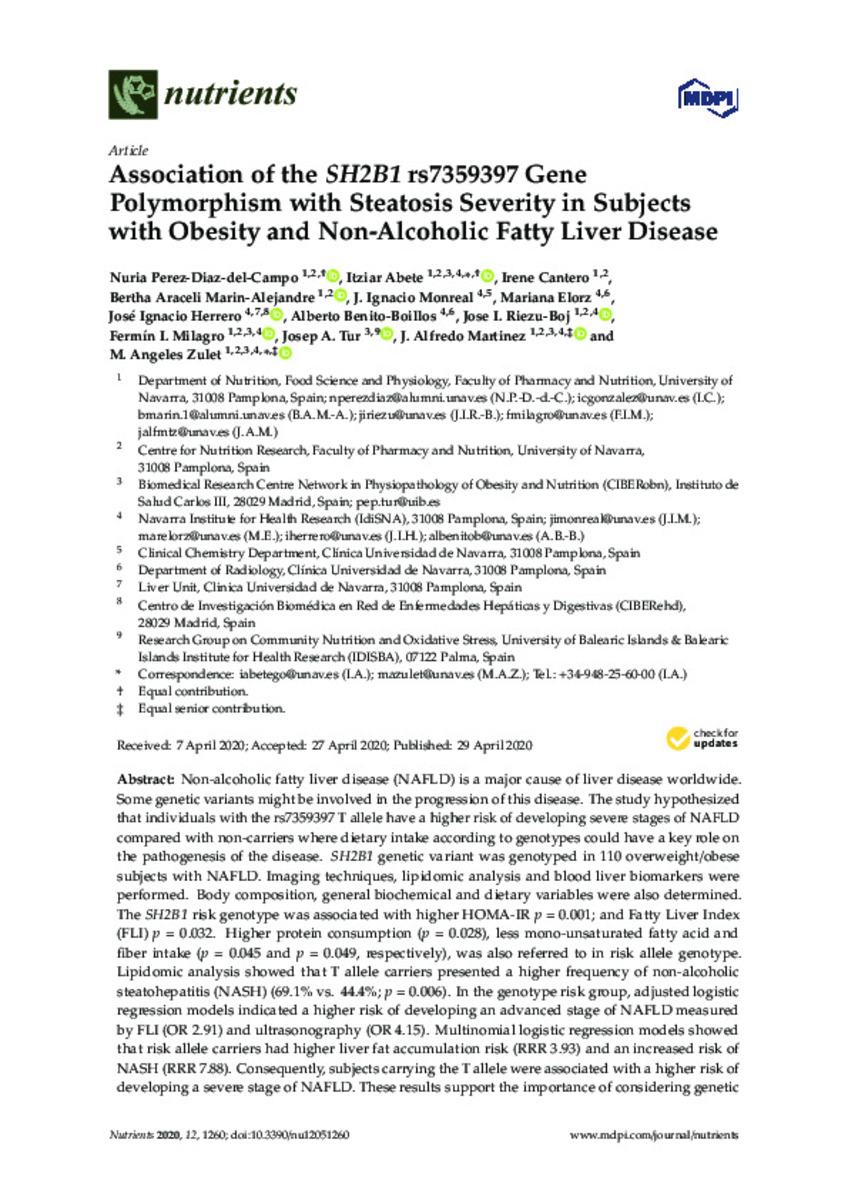Association of the SH2B1 rs7359397 gene polymorphism with steatosis severity in subjects with obesity and non-alcoholic fatty liver disease
Keywords:
NAFLD
Obesity
Steatosis
SH2B1
Polymorphisms
Note:
This article is an open access article distributed under the terms and conditions of the Creative Commons Attribution (CC BY) license
Citation:
Pérez-Díaz-del-Campo, N. (Nuria); Abete, I. (Itziar); Cantero-González, I. (Irene); et al. "Association of the SH2B1 rs7359397 gene polymorphism with steatosis severity in subjects with obesity and non-alcoholic fatty liver disease". Nutrients. 12 (5), 2020, 1260
Statistics and impact
0 citas en

0 citas en

Items in Dadun are protected by copyright, with all rights reserved, unless otherwise indicated.









